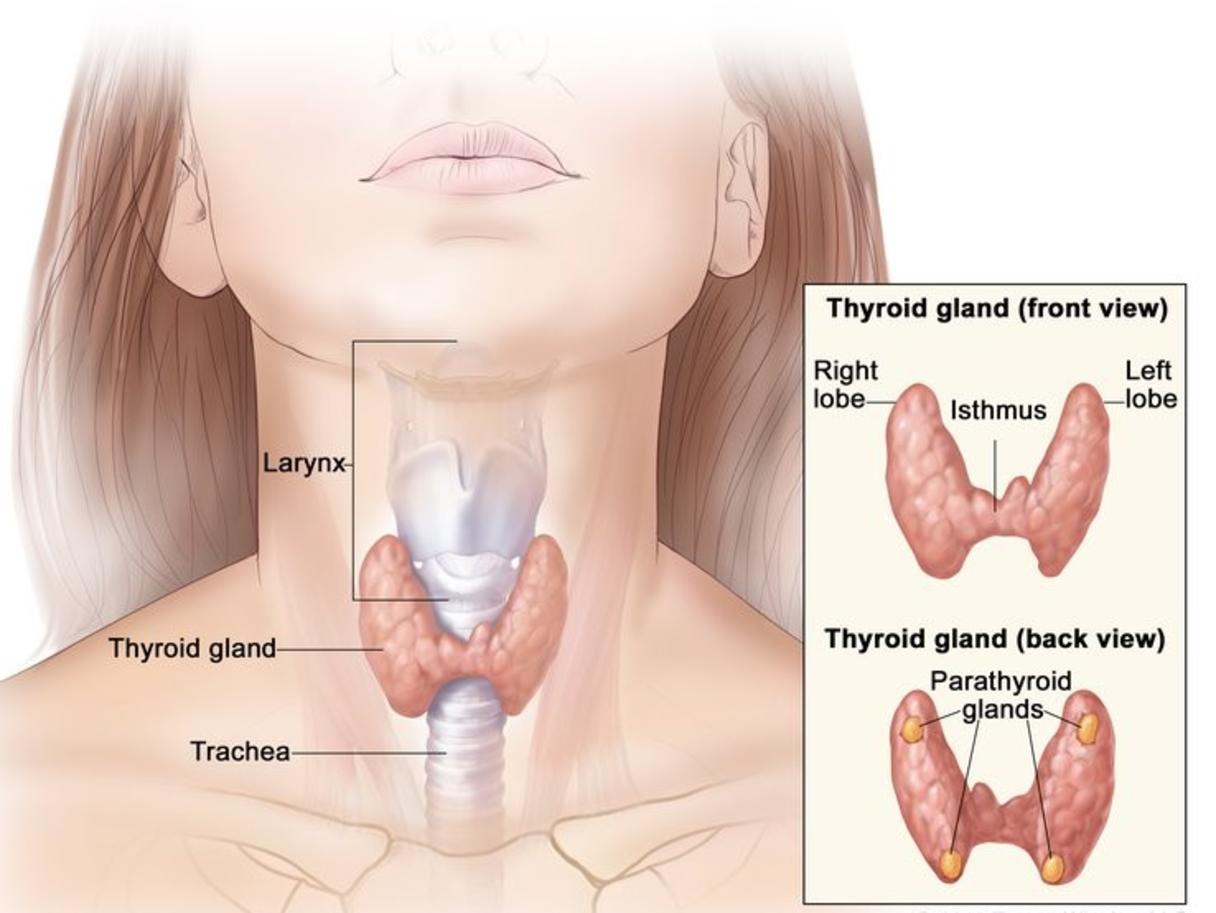Thyroid Cancer
DCEG researchers conduct studies on thyroid cancer etiology and survivorship. They routinely monitor changing patterns in thyroid cancer detection, diagnosis, and treatment. Learn more about our research using descriptive epidemiological methods.
To better understand the etiology of thyroid cancer, they conduct case-control and cohort studies examining a wide range of exposures, ranging from more well-established risk factors (e.g., childhood exposure to ionizing radiation), to factors that have a tentative but plausible connection with thyroid cancer risk (e.g., sex steroid hormones, environmental contaminants). They also investigate health concerns specific to thyroid cancer survivors, including the potential late effects of radioactive iodine treatment.

-
Chornobyl Childhood Thyroid Dosimetry
A coordinated study of thyroid cancer and other thyroid diseases in a cohort of 25,000 persons from Belarus and Ukraine who were exposed in childhood to fallout from the Chornobyl Nuclear accident.
-
Comprehensive Genomic Characterization of Radiation-Related Thyroid Cancer in Ukraine
As part of research into the health effects of the Chernobyl nuclear accident, investigators in the Radiation Epidemiology Branch are studying the increase in incidence of thyroid cancer, particularly among those exposed to radioactive fallout as children or adolescents, with the goal of understanding the molecular signatures and the mechanisms underlying this association.
-
International Pooled Analysis of Risk Factors for Thyroid Cancer
An analysis of thyroid cancer risk combining data from prospective studies in North America, Europe, Australia, and Asia
-
International Pooled Thyroid Cancer Case-Control Studies
The incidence of thyroid cancer has rapidly increased in several countries over the past four decades. This international pooled analysis of 14 case-control studies of thyroid cancer is currently being used to examine associations between a wide range of reproductive and hormonal factors and thyroid cancer risk in women.
-
In Utero Exposure to Chornobyl Fallout in Belarus and Ukraine
Dosimetric studies of persons exposed to Chornobyl fallout in utero and early life in Belarus and Ukraine
-
Perinatal Exposures and Thyroid Cancer Risk
Thyroid cancer incidence is much higher in women than men, and this sex difference peaks during the reproductive years. These studies investigate perinatal characteristics and exposures in Nordic women.
-
PFAS Exposure and Risk of Cancer
DCEG investigators in the Occupational and Environmental Epidemiology Branch (OEEB) have developed a portfolio of research aimed at identifying cancer-types associated with per- and polyfluoroalkyl substances (PFAS). These studies are innovative for their direct assessment of exposure using banked serum specimens as well as their evaluation of risks at varying exposure levels, from occupational exposure to those found in the general population or among military personnel.
-
Study of Thyroid Cancer and Other Thyroid Diseases Following the Chornobyl Accident (Belarus)
A long-term study to assess the relationship between exposure to I-131 from the Chornobyl accident and the occurrence of thyroid cancer and other thyroid disorders of in children.
-
Study of Thyroid Cancer and Other Thyroid Diseases Following the Chornobyl Accident (Ukraine)
A long-term study to assess the relationship between exposure to I-131 from the Chornobyl accident and the occurrence of thyroid cancer and other thyroid disorders in children.
-
Thyroid Cancer Risk Assessment Tool (TCRAT)
The R package thyroid implements a risk prediction model developed by NCI researchers to calculate the absolute risk of developing a second primary thyroid cancer (SPTC) in individuals who were diagnosed with a cancer during their childhood.
-
Thyroid Dose and Risk Calculator for Nuclear Weapons Fallout for the U.S. Population
This calculator estimates radiation dose received by the thyroid from radionuclides in fallout from nuclear tests conducted at the Nevada Test Site (NTS) and sites outside of the United States (global fallout); estimates risk of developing thyroid cancer from that exposure; and provides an estimate of probability of causation, sometimes called assigned share (PC/AS), for individuals who have been diagnosed with thyroid cancer.
-
Tonsil Irradiation and Risk of Thyroid and Other Cancers
A cohort of about 3,000 individuals who were irradiated during childhood for benign head and neck conditions at Michael Reese Hospital was assembled and monitored for the risk of thyroid and other cancers.
-
U.S. Radiologic Technologists Cohort (USRT) - The Rad Tech Study
The Rad Tech (USRT) Study investigates cancer and other serious disease risks associated with protracted low-to-moderate dose radiation exposures in an occupationally exposed cohort in the United States.
